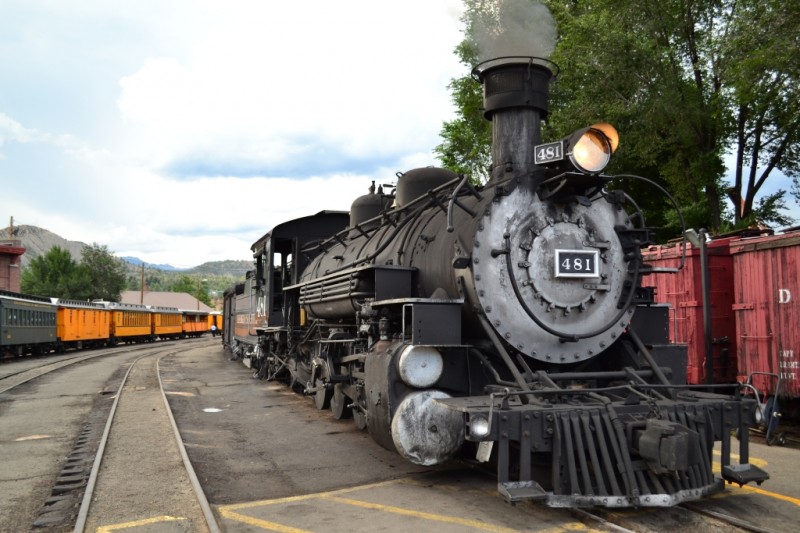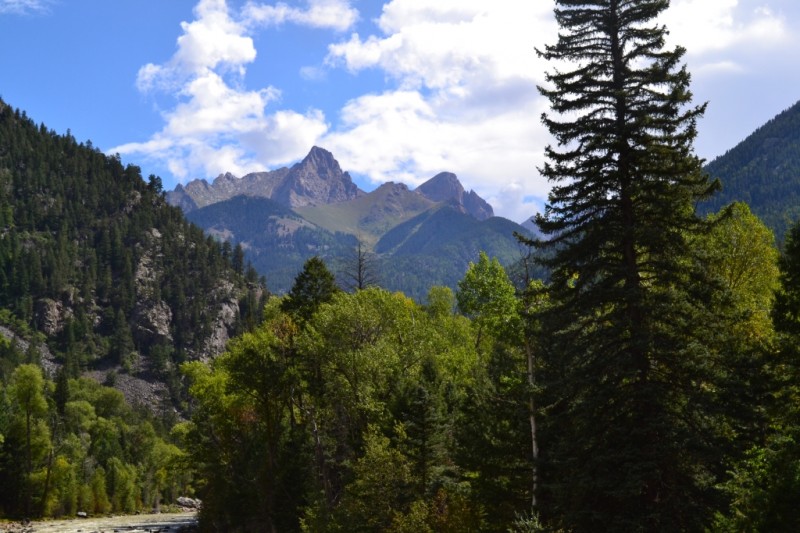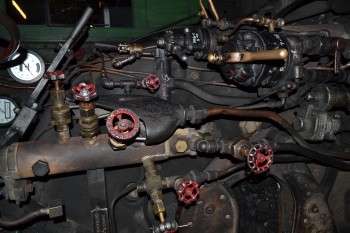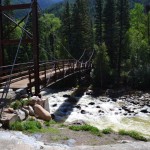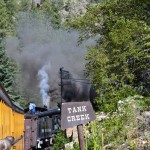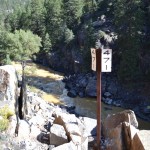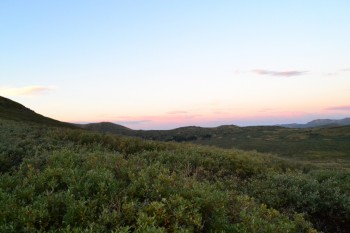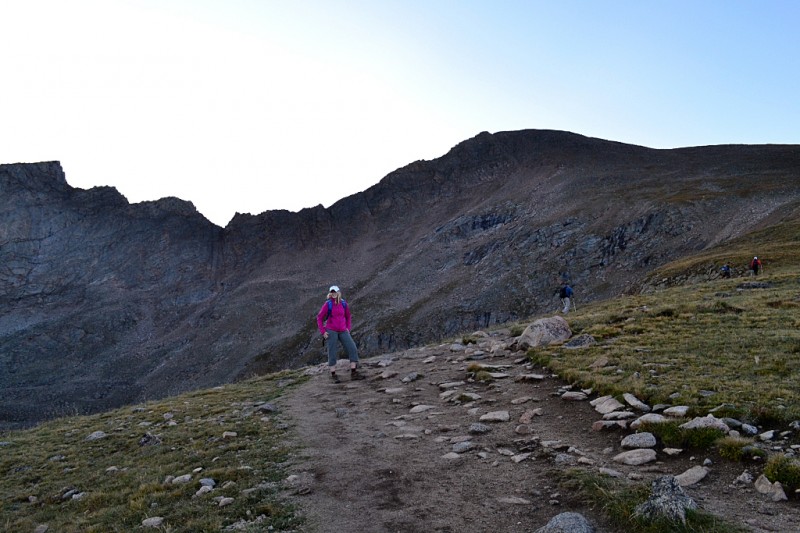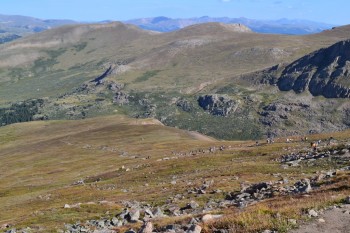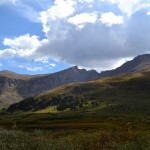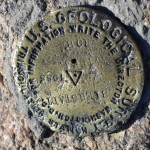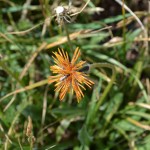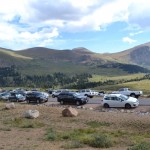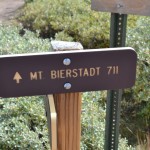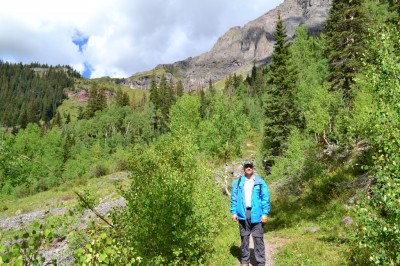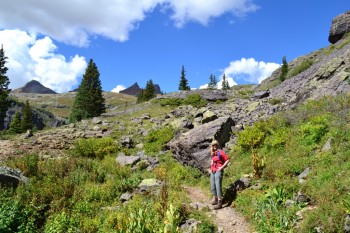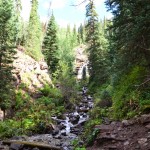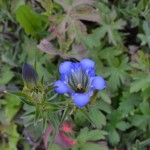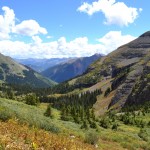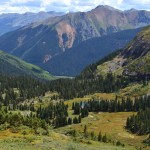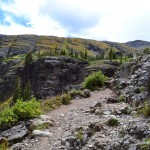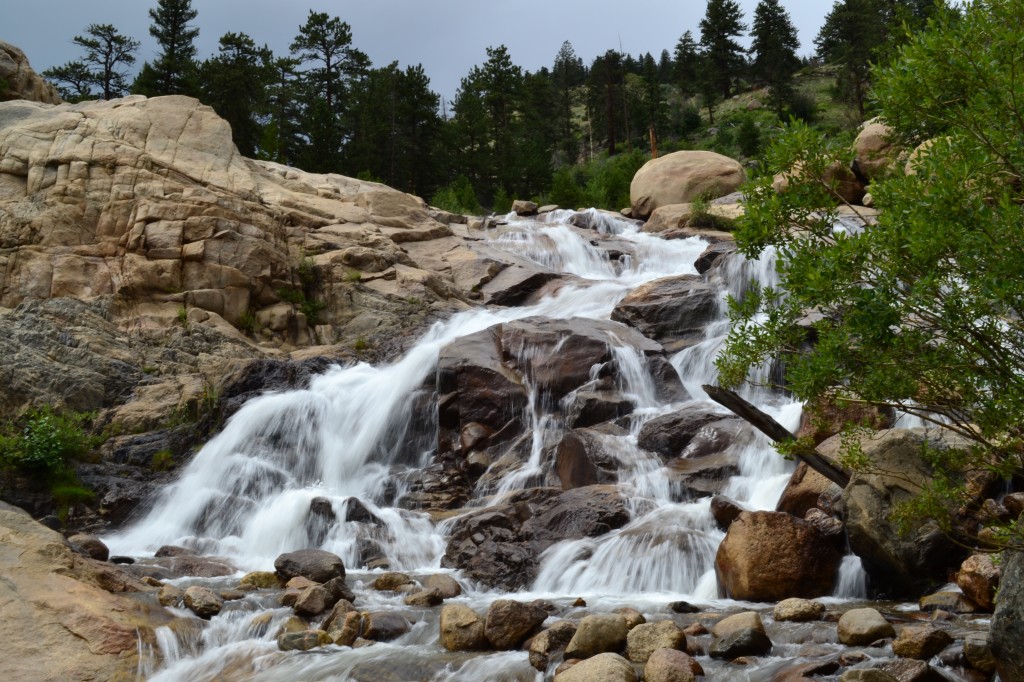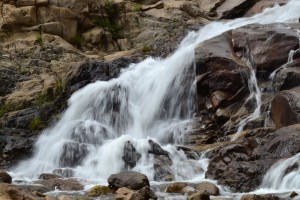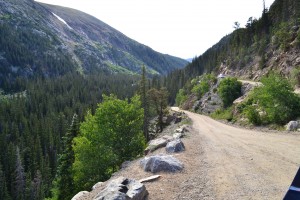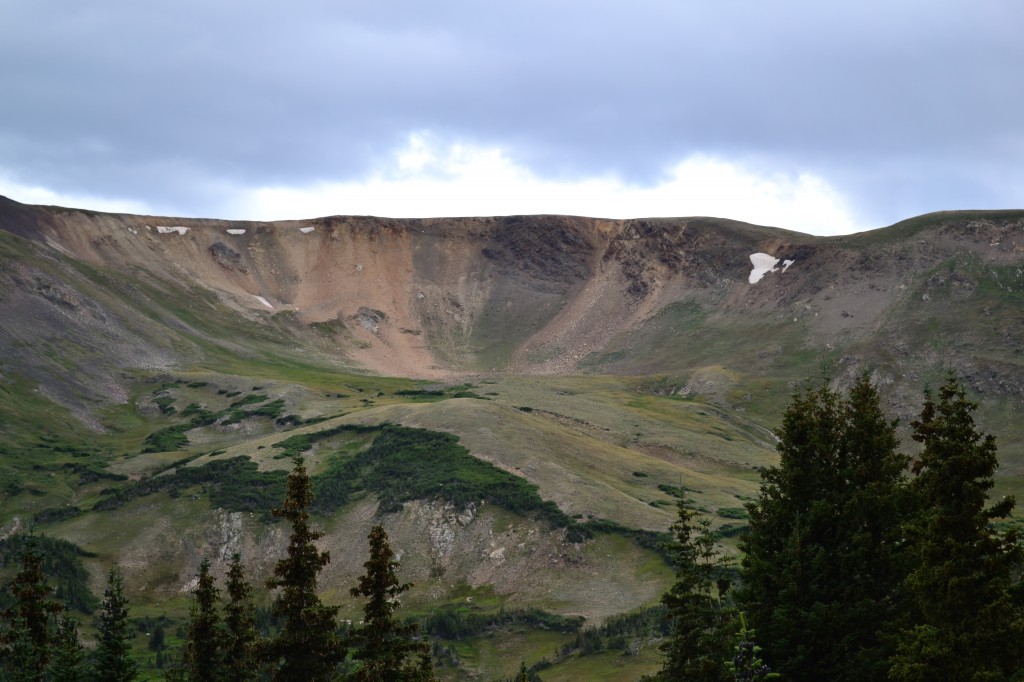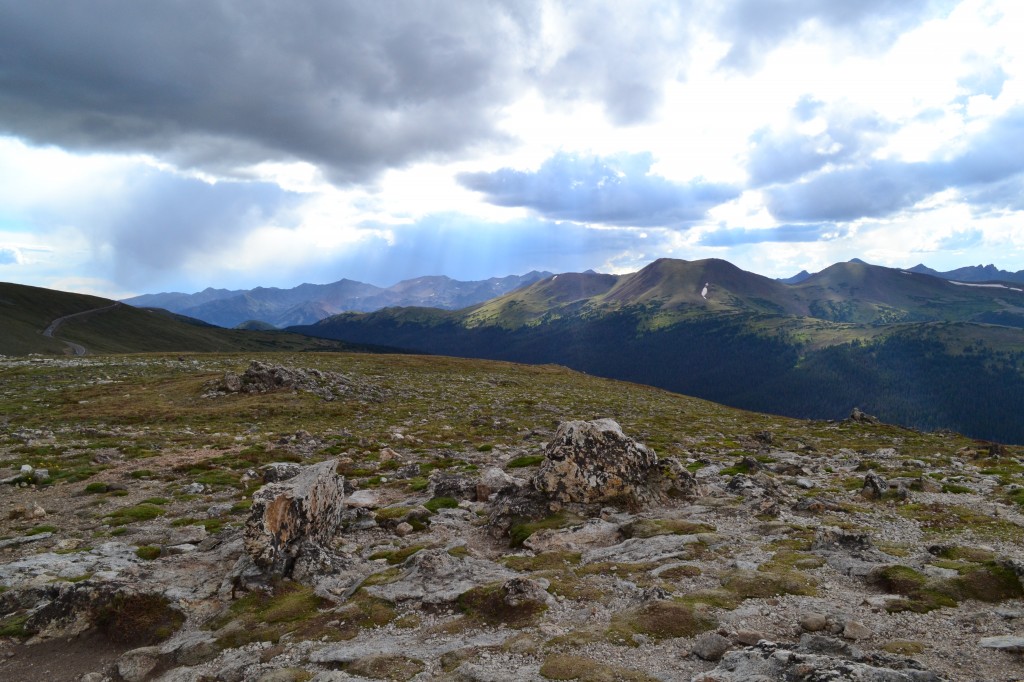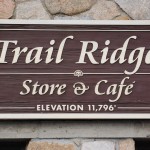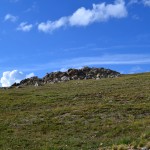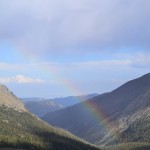Take a Walk
A Quest into the Wild
Durango and Silverton Narrow Gauge Railroad

A few weeks ago, as part of our long journey to the wild southwestern side of the state, we took a ride on the famous Durango and Silverton Narrow Gauge Railroad. It’s somewhat of a Sandifer family tradition to travel to Durango and ride this all steam locomotive up to Silverton and way too many opportunities to follow this tradition have passed us by over the years. For labor day weekend, it was our turn to relish in the rich history of these towns and the 45 miles of three foot narrow tracks that link them. Seen below is steam engine 481 that we rode.
The railway was built in 1881 and has continuously run since then, first to carry miners and supplies up to search for gold and ore in the San Juan Mountains and now to carry travelers to visit these relics of the past. The locomotive we rode on this trip was built in the 1920s. We began our day bright and early and drove down to the original train station in Durango which was erected in 1882. The platform was a vibrant scene full of eager passengers ready to board the train. We picked up our tickets fairly easy considering the crowd and made our way to car number 21. Though there are many options to choose from for cars and seating while aboard, we opted for the open air gondola ride. Instead of being confined to the inside of a car, we wanted to feel the wind and be among the vibrant scenery. The train departed at 8:45 am sharp and we were off!
We were excited to get the right side of the train for the journey up in elevation. This side is known to get the best views first. From the moment we sat down on the train, it felt like we were going back in time. The conductor and train engineers were all in classic attire and graciously welcomed us onboard as well as meticulously checked and punched our tickets. The only thing that brought us back to reality was the introduction to the concession cart and the promise of bloody mary’s, pictures and souvenirs for a small fee. The train began slowly and we rolled through the town of Durango at a leisurely pace. The sun was just beginning to rise higher in the sky and warmed our cheeks as we gazed out at the Animas River. In the early part of the ride, we saw many people, parks, buildings, but despite the suburban setting, we also saw a large buck mule deer.
After the first 45 minutes of the ride, the train slowly snaked its way up into the mountains. As the train worked hard to gain power, we could feel the warm droplets of steam hit our skin from the engine. We also had to save our eyes from the constant flow of cinder and ash from the burning coal. If not careful, eyes can be burned very easily. Seen below are photos from the train as we began to climb into the mountains. Notice the powerful steam released from the engine as we gained speed!
The ride became amazing at this point. We kept climbing higher and higher. Overall, the train gains over 3,000 feet in elevation in those mere 45 miles to Silverton. As we climbed, the Animas River to our right became much smaller. And then we noticed that our proximity to the edge of a cliff became closer. The “narrow” gauge railway fits its name in more ways than one, narrowly creeping along the edge of a precipitous cliff face. Though scary, it made for the most exciting part of the ride. As we looked over the edge of the car, we could seen hundreds of feet below us. The train also makes a large curve at this point and allowed us to see the front of the steam engine and the old wooden bridge we had to cross. Seen below are photos of the cliff climb.
After crossing the narrow bridge and in and out of tunnels blasted out of rock, brilliant views of the San Juan Mountains emerged. We made a few stops along this portion of the route. Once to fill up with gallons and gallons of water to allow us to reach Silverton and twice to let hikers off and pick up hikers. One of the most famous spots was the Needleton stop. Tons of backpackers hopped off at this stop to hike to the famous Chicago Basin and tackle a variety of San Juan summits (14ers) in the area. Next time, that is our plan. Seen below are the Needles Mountains and the bluebird sky that stayed with us for the first half of the trip.
The Animas River also followed us throughout the train ride. We ended up crossing it 5 times as the rail tracks snaked in and out of the river’s path. The river was not as crisp and clear as we had originally imagined it to be, but rather appeared more wild and muddy. Nonetheless, it’s power and beauty was a highlight of our trip on the DSNGR. As we approached Silverton in the last 20 min of the ride up, it began to rain on us. While some sought shelter in the covered cabs, we welcomed the cool, rain as it did become pretty warm in the sun exposure outside. Amid the steady rain, we caught glimpses of waterfalls in the background of the river. Seen below are photos of the waterfalls and the quaint town of Silverton.
After about 3 hours and 45 minutes, old 481 rolled into Silverton just a block from main street. The tracks appear to just run out in the middle of the street in town. We kind of wished that we had stuck around to see how the train turns its self back around to head back to Durango. When we returned to the train for our trip back, it was already positioned south ready to go. The train trip allows for a 2 hour stop in town to enjoy lunch and some shopping. After a bit of wandering around we stopped in The Pickle Barrel to enjoy some soups and wraps and then shopped a bit around town. The two hours we stopped were all too brief and in a short time, we had to head back. However, we returned to town a second time on this trip after exploring a ghost town that we’ll share later. Silverton is a unique, history rich town still exuding its mining rich heritage. Seen below are photos of the train stop in Silverton.
The train ride back was long but still an enjoyable experience. A lot of the passengers that rode up with us decided to take the bus back so we had more of the train to ourselves. Plus, since we looking west this time, all the views were different and unique. We got to witness views of the Animas that we missed the time before as well as Tacoma Power Plant (hydroelectric). This plant was built in 1906 and originally supplied power for Silverton mine operating projects. It is still operational today providing renewable energy for many in the area. Though we didn’t get a photo, the vintage plant in the middle of the wilderness provides a unique perspective.
Once back at the train station we took a few more glances — and pictures — of the train and engine and then went into the train museum (which is free with train tickets). The museum was really cool. It had a large collection of miniature figurines, historical firearms, a large model railroad, two large real life steam engines, four historical automobiles, and an old airplane! A very diverse collect. All the objects were well documents and the staff were friendly. When we walked back outside the train was gone and the station felt very empty. The day of trains had definitely come to an end. Above are some images from the end of our ride and the museum.
Mt. Bierstadt Summit

Distance: 7.55 miles (out and back) Elevation Gain: 2,950 ft (total) 2,585 ft (net)
Max Elevation: 14,057 ft Min. Elevation: 11,472 ft
At 3:30am on September 8, 2013 we got out of bed, grabbed a quick breakfast and our gear, and headed out for our first 14er — Mt. Bierstadt. It was Allyson’s birthday and this was about as exciting an adventure as we could think of for celebrating her special day. Driving up through the mountains the city lights faded away and we were left with darkness and the stars. There were thousands of them twinkling down at us, telling Allyson Happy Birthday.
To get to Mt. Bierstadt we passed through the town of Georgetown and noticed how nice it looked and resolved we’d stop by on our way out and get some brunch. After Georgetown we were on the famous Guanella Pass. This is a high mountain road that leads from I-70 to US Highway 285 (which we became intimate with on our trip to Durango and Silverton). The pass was almost pitch black and we were afraid we might miss the trailhead. Luckily, we had an idea of about how far we needed to drive on Guanella Pass (about 10-12 miles) and around mile 10.5 we saw headlamps of hikers in a parking lot to the left (east). We pulled in, found other hikers ready to climb Bierstadt, and we knew we were in the right place.
We began our hike at roughly 5:45am. The sun had not risen yet and it was cold, around 40° degrees. We donned our jackets and our headlamps and began our hike into the darkness ahead. You can see some photos from the start of our hike above.
The first part of the hike is through a dense marsh. In this riparian ecosystem we had heard that moose have become common, but we never expected the following scene when we set out that morning. We were hiking more or less alone when we saw a group of hikers stopped ahead of us. Assuming they had just seen something interesting or were trying to find something in their packs we just walked right up. As we approached we heard loud grunting sounds coming from what appeared to be a huge black shadow blocking the trail ahead of us. Adjusting our eyes we could see this large black object was moving and had huge antlers. It was a massive shiras bull moose — and it appeared to be mad.
We looked at the other hikers around us, who didn’t appear as concerned as we did, and we backed off. Turning off our headlamps we sat in the background as we watched a couple of hikers beat their ski poles at the moose trying to “scare it off.” They were told this wasn’t a bear and that they were just agitating it, to which they responded, “That’s what you’re supposed to do!” Well, after their approach with beating sticks the bull started to grunt more, lower his head, and grind his antlers into the shrubs around him, causing the branches to break loudly. We backed up some more, however, the hipster looking young hikers decided they were going to circumvent the moose by going off trail and around him. This is where it got interesting.
In the area was a cow and a large calf, which we had all seen. So we weren’t going to ‘invade’ the bulls area with the mama and baby around. But the hikers ventured out into the marsh, with its at times knee high water and thick mud. After a minute or two of them walking out at an angle to the bull he bolted out toward the hikers. They were startled by this and began plodding back towards the trail as best they could. Luckily for everyone involved the bull only feigned an attack. Once the hikers were heading back towards the trail and away from his area the bull stopped his charge. Also lucky for us, after the end of the feigned charge the bull kept walking out into the marsh away from the trail, which meant we could continue on our way — having witnessed something pretty awesome.
Sadly, given the fact that the sun wasn’t out and the danger of approaching an agitated bull moose we didn’t get a picture of this majestic creature. The image below is handheld with a multisecond exposure, so it’s pretty blurry. But you can make out the shape of the moose with his antlers. The hikers to the right were the ones beating their trekking poles at the moose.
Continuing on our way we crossed a series of small bridges (very well maintained) that crossed over the wetter parts of the marsh. Looking down with our headlamps we noticed that when the light hit the bridge it sparkled back at us. At first we thought that perhaps this was some sort of grip that had been placed on the bridge so hikers would be less prone to slip. However, this was very far from the truth. Upon further inspection it was clear that the sparkling was ice, and we realized we needed to watch our step. It was cold indeed this morning.
After a few of these bridges we were on a nice path, and the sun was starting to come out. There were already a few groups of hikers about, as witnessed by the moose, and after a very short jaunt from the end of the bridges we saw our next group of hikers staring at something of interest. This time it was a fast moving stream that everyone was concerned with. There is no good way to cross the stream and one couple was not able to get their dog to cross the stream. In fact, when they tried to pull him across by the leash he just laid down. They let us go in front of them.
We were wearing waterproof boots so the stream was not a problem for us. But others weren’t so lucky. If you plan on hiking Bierstadt we strongly recommend bringing an extra pair of socks and good hiking boots for this crossing. Once across we moseyed on through the trail and took some shots of the sun rising, which you can see below.
The trail actually starts to go up at this point. If you take a look at the elevation profile of this hike it starts out at 11,734 ft and then dips to 11,497 ft. Thus, the first mile is all downhill. It’s only after that first mile that you actually begin the 2,558 ft ascent. This second part of the hike is still a very nice trail and not very rocky at all. There were still some wildflowers about, mostly paintbrushes, alpine avens, and some members of the stonecrop family. It was very pretty, but chilly, as we were still climbing in the shade.
After a bit of hiking we could see the crest of the hill we had been climbing and Mt. Bierstadt and the Sawtooth came into view again. We were very excited to see it and stopped to take some pictures. In the image below you can see the Sawtooth’s jagged crest and the summit of Bierstadt to the right.
The trail continues to be friendly for a ways further, but then abruptly shifts to a less friendly rocky trail. It begins to be steep at this point, with some parts of the climb approaching a 70% grade. The footing can be slippery as well with little streams of water flowing down from unseen sources. It is a section to take at a nice comfortable pace, and again we recommend good boots for this. Below you can see two images of the trail at this point. In the image on the right you can just make out a cairn on the top of the hill, in the center.
As we neared the summit we started talking about how the name of the mountain literally meant Beer Town (bier = beer, Stadt = town/city). Our hope was that there was a super secret and exclusive little bar on top of the mountain with a few good beers on tap. We knew this had an infinitesimally small chance of being true, but it was fun to think about and this was Colorado. But this got both of us thinking about where the name actually came from, since there was no town in Colorado nearby with the name Bierstadt. As it turns out, Mount Bierstadt is named after the famous painter Albert Bierstadt. His beautiful paintings of Colorado can be found here: Gallery of Albert Bierstadt’s Works.
After hiking through that rocky section you crest a small ridge and it becomes very clear what you have to do next. The summit is clearly visible and unless you are very early indeed you will see people standing on the summit. There are roughly 300 ft. left to climb at this point, and it does involve a little scrambling. Below is a picture of the 300 ft. tall mass of rocks that you must climb to get to the true summit.
Well, we decided to try and follow the cairns up to the top, and quickly realized that this was silly. There are cairns set up all over the place and there don’t really lead through any one course up. After a while we just said, alright, let’s just go straight up — and we did. Once on the top we had a great view of our surroundings and quickly found the summit registry. We signed it, took a seat, and got out the birthday cake! Here are some of the pictures from the top of the mountain. Notice the cake and balloons in Allyson’s sign!
There are two large lakes visible from the top of the mountain. Abyss Lake (which has a pretty cool name) and Frozen Lake. Frozen Lake is visible from just before you ascend the rock pile to the south-east and Abyss Lake is only visible from the summit to the north-east. Abyss Lake is rather large and directly between Mount Bierstadt and Mount Evans. They are both shown below (Abyss on the left and Frozen on the right).
It is possible to cross the Sawtooth (13,440 ft.) from Mt. Bierstadt and then Mt. Evans (14,265 ft.) and Mt. Spalding (13,842 ft.) become accessible. However, the trek over the Sawtooth is an intense scramble which can take 2 hours to complete. We knew the weather forecast predicted thunderstorms in the afternoon, hence our early start, so we opted not to follow some of the other hikers who were intent on crossing over. But this gave us something to look forward to and we plan to return one day.
After taking our photos, signing the registry, and looking around we decided to head back down. We didn’t follow any path this time, we just headed straight down the rock pile and ignored the confusing and sporadic cairns. It was getting very busy and we could see lines of people trekking up the mountain. We were very happy we had started early and had avoided the throngs of summit hopefuls. Below is a shot of Allyson down-climbing the rock pile and a shot of the hordes ascending the mountain — arrive early!
We quickly made our way down and the path was large enough that passing the crowd wasn’t a big deal. It was a gorgeous day and the sun was out in full force. We were now able to see everything that had been obscured in the dark and the shadows. Toward the bottom of the mountain we began to notice thunder clouds forming and we were again glad of our early start. Below are some of the shots we got on the way down and on our way out.
Back at our trusty truck we looked at the parking lot and couldn’t believe how many cars, trucks, and RVs were parked in the lots and on the road. And then we saw a group of young bighorn sheep rams. We didn’t see the mature rams or ewes, but we’re guessing they were probably around. They were very cute, but we just took pictures from the truck.
It had been a very eventful day, and it was barely 11am! We headed down the mountain and enjoyed a brunch at The Happy Cooker as it started to rain. Perfect timing.
Ice Lake: San Juan National Forest: Silverton, CO

Distance: 7.44 miles (out and back) Elevation Gain: 3,148 ft (total) 2,431 ft (net)
Max Elevation: 12,276 ft Min. Elevation: 9,845 ft
This labor day weekend we ventured out of the Front Range to explore the rugged and wild San Juan Mountains of southwestern Colorado. This area of the state still maintains a sense of old time tradition and reflects the mining days of past. In fact, its hard to find a hike or scenic drive through the area that’s not littered with abandoned mine structures or ghost towns. With hundreds of miles of beautiful trail to explore, including the famous Colorado Trail, it was challenging to pick just one hike. Ice lake lured us in with the promise of pristine, caribbean blue waters amid throngs of 13ers.
To reach the Ice lake Trailhead, we followed 550 north out of Silverton for about 2 miles. We then turned left on County Road 7 into the mineral lakes campground and trails area. We followed the dusty dirt road for about 5 miles to a small parking lot. Just north of the lot, is a tiny sign reading “Ice Lake Trail”. No mileage signs were present which contrasted with RMNP and the Front Range where they are very common. In fact, this was the only sign for the remainder of the hike. At times, it added to the remoteness of our hiking experience. At other times, we kept wondering “how much further…it feels like we have been climbing forever.” Almost immediately, the trail begins to gain elevation. In fact, the first 2 miles we gained over 1,600 feet in elevation while passing in and out of a dense forest followed by a brief stroll through a meadow and finally to the lower ice lake basin. Despite the intense climb, we were frequently rewarded with waterfalls along this portion of the hike and majestic views of Mt. Vermillion and Fuller Peak once we reached the basin. There is an option before reaching the open meadow to take a brief side trip to view an amazing waterfall. We were able to carefully cross the fall. However, extreme caution should be executed. It is slippery on the rocks and logs in the water and one wrong step could be fatal. Seen below are photos of this waterfall and “bridge” and views from the meadow.
After passing through the first meadow, we continued to climb up steep switchbacks. While intensely vertical, the trail was a smoothly packed red clay surface which was a bit helpful. After a little over 2 miles, the trail opened up to Lower Ice lake Basin. Even though it was early September, the landscape was still mostly green, and wildflowers still dotted the trail and hillsides. The trail levels off for a little while here and gave our hearts a much needed rest. It should be noted that this is a very high elevation hike. At the starting point, we were already about 9,800 feet. As we arrived at the lower basin we were over 11,000 feet. Simply standing in the basin was mesmerizing. In all directions we were surrounded by enormous peaks. Emanating from the sides of the mountains were powerful waterfalls, fueled by unseen alpine lakes from the terrain above. These waterfalls formed gorgeous streams which drained into the lower Ice Lake. We were in an alpine wonderland. Seen below are photos from the basin before we began our the remaining ascent to Ice Lake.
After our all too brief break in the Lower Ice Lake Basin we began our ascent to Ice Lake. This was a steep climb and at times very rocky with loose gravel. It should be noted here that according to our GPS the average percent grade on this portion of the hike was around 21% and at times was above 80% on the hike (40 degree incline). This made for a challenging hike and we were really hoping for a great reward at the top, which we found.
One of the best parts of this portion of the hike was looking back at where we had come from. On this part of the trail we were surrounded by peaks in almost every direction save the direction we came from. The geology formed what almost looked like a large theater where the area we were climbing up was the stage and the peaks around us were the stadium seating. Towards the beginning on this portion was a large waterfall fed by a stream from Ice Lake. On one part of this section you must hike harrowingly close to a cliff that drops down into a crevice the waterfall has created over the millions of years it has been eroding the rock away. Below are some of the pictures we got of the waterfall and looking back towards the Lower Ice Lake Basin.
After what felt like forever we finally saw what appeared to be four-wheel drive tracks that led to what we could only imagine was the lake. We walked up those tracks for a few hundred feet and were greeted by the most beautiful azure alpine lake we have ever seen — Ice Lake. The sun was out and made the lake almost glow a turquoise blue usually reserved for post-cards and expensive coffee table books. We strolled up to the lake and savored the scenery. Vermillion Peak, Golden Horn and Pilot Knob, all 13ers provided a powerful backdrop to the bright blue lake. Below are some of the pictures we took at the lake.
After enjoying the lake for about 20 minutes, as if on cue, a large crack of thunder erupted overhead. For a moment we thought perhaps someone had set off some dynamite at a nearby mine; but then we saw the dark clouds crest over Pilot Knob and Golden Horn. We took a few last looks at Ice Lake, regretted not being able to continue to nearby Island Lake and headed back down, quickly.
The climb down was much easier than going up; however, the loose gravel and steep grades did force us to be careful and watch our step. Every now and then we’d hear a huge crack of thunder and be reminded of the urgency to get back to the tree line. We did manage to get a few good pictures of our early descent which really put into perspective the immensity of the area — they are below. In both pictures if you follow the trail you will notice small dots on it, which are people.
We made it quickly back to tree line, across the Lower Ice Lake Basin, and into the last part of the descent. Once there we realized that we might have lucked out and stayed ahead of the rain; and that we might end up staying dry. By the time we were below 10,000 feet we knew we had dodged the rain and were very excited to be back at the truck, dry, and with plenty of daylight left. Leaving our hike we knew that we had really only sampled what the San Juan Mountains had to offer and we have already decided we will have to come back in the future to explore the plethora of 13ers, 14ers, lakes, mines and ghost towns which seem ubiquitous in this area.
RMNP: Mummy Range and Old Fall River Road

As we attempted to turn a hairpin and ascend up yet another switchback on the dusty dirt road, the car lurched into a deep rut, tilting the car and placing the passenger side closer to the ground than comfortable. We all cried out briefly before Thomas quickly regained control. And again, we asked ourselves “Why on earth did we bring the Altima instead of the X-terra!?” Our day had evolved from a quiet, peaceful visit to nature into a full out adventure. Without exactly meaning to, we ventured deep into the heart of Rocky Mountain National Park. We were excited to have Jim and Beverly join us from Austin on this trip and wanted to show them our favorite part of Colorado. We initially opted to drive into the park for a brief trip and visit a few different landmarks via short hikes instead of a long day on foot. But, as always, our days turn out longer and we see more than we ever bargained for.
We began our trip by entering the park via the Fall River Entrance station off of Hwy 34 and continued into the park along this road before turning right onto Fall River Road. Briefly down this nicely paved road we found the East Alluvial Fan parking lot and trailhead and made our first stop to see the alluvial fan and Horseshoe Falls. In 1982, the terminal moraine holding back Lawn Lake broke through releasing nearly 30 million gallons of water. The water swept trees, boulders, sand and sediment 4 miles down into the valley. Hikers were killed, and the town of Estes Park was soon 6 feet underwater. The alluvial fan and falls are easily accessible via a short (0.25 miles one way) paved trail. With camera gear in hand, we made the short climb to the magnificent falls. While the trail only ventures to the base of the falls, hikers have the option to climb as high as they want via some mild scrambling up some large boulders that litter the area. To gain a better view, we hiked part way up the falls. Seen below are photos of Horseshoe Falls and the boulder-bed left behind from the powerful flood waters.
After a little exploring we then hiked back to the car and proceeded further west on Fall River Road. Along the roadside in nearby meadows we saw many mule deer relaxing in groups and under the shade of nearby trees. Our next destination was Chasm Falls. According to our guide book, the falls can be accessed right off of Old Fall River Road (Fall River Road dead ends and turns into this). The word “old” in Old Fall River Road should have clued us in to what we were in for when we ventured into the northern Mummy Range. Once a car enters this old dirt road, there is no turning back. Literally, this narrow dirt pass is a one way road…for nine long miles. So when you want to see Chasm Falls via car, you will also get to see another 7.6 miles of scenery along the rest of the route, plus another exciting 14 on the way back via the famous Trail Ridge Road. About 1.4 miles up the road a nice parking area emerges to the left with a trail entrance to Chasm Falls. The trail is very short but descends sharply to the base of the falls. At the bottom there is a nice railed-in spot to enjoy great views from the bottom of the waterfall. Seen below are photos captured at Chasm Falls.
After exploring Chasm Falls we got back into the car and made our start on the remaining 7.6 miles that lay ahead of us. The road is one long continual climb and gains about 3,000 ft before reaching Fall River Pass and the Alpine Visitor’s Center which resides at approximately 11,796 feet. There are no guardrails. At times, it was a bit nerve racking looking out of the passenger window to a drop-off of about 2,000 feet. This is not a drive for the impatient or heights sensitive person. However, the views and experience were well worth the effort. Seen below are photos taken on Old Fall River Rd. while still in the subalpine forests. The chipmunk photo is courtesy of Beverly Robertson.
The last few miles of the old road propelled us into the pristine alpine, and the montane and subalpine forests slowly disappeared in our rear view mirror. The immensity of the surrounding mountain ranges and glacial cirques were outstanding! We were awarded excellent views of the Fall River Glacial Cirque. It appeared as though someone took a giant ice cream scoop and carved out a section of the ground. A cirque is actually a unique land formation found in mountain landscapes formed by alpine glaciers. Seen below is the cirque from the Old Fall River Road.
Once we reached Fall River Pass, we parked the car and proceeded to the trail that leads upward to Fall River Pass Mountain. This is a short 0.3 mile trail that climbs 220 vertical feet to a rocky outcrop that provides excellent views of the Mummy Range to the northeast and the Medicine Bow Mountain to the north. The steepness of the hike (about a 15% grade) and its high elevation have caused problems for many visitors pushing themselves to the top. Locals have apparently nicknamed it “Heart Attack Hill.” We pushed ourselves to the top pretty easily and were happy that all our previous hikes and climbs in altitude made this trek nice for us. Seen below are photos from the rock outcrop and surrounding mountain ranges.
After spending a bit of time exploring and taking in the breathtaking scenery we reluctantly hopped back in the car. It was getting late and we were still in the middle of the wilderness. Since Old Fall River Road is one way, we followed the famous Trail Ridge Road back to the eastern side of the park. Where the old road had led us on a trip to the past and auto days gone by, the Trail Ridge Road transported us back to modern days. It was smooth, paved and the speed limit about 4 times faster. Trail Ridge Road is known as “the Highway to the Sky” and rightfully so. Over 11 miles of the trail are above 11,500 feet, and at its high point the road gives visitors access to 12,183 feet. This is the highest point accessible by car (mostly by car) in the entire park. Along this road we were thrilled to see a group of Elk grazing in the alpine. They will reside up here for a few more weeks before migrating back down to lower elevations as the fall approaches for mating season. Seen below are photos of the Elk and various landmarks along Trail Ridge Road. Elk photo is courtesy of Beverly Robertson.
We ended the day with an exciting bear sighting. As we drove toward the exit of the park, we noticed photographers by the road staring up into the brush. Curious, we pulled over and were greeted (at a very safe distance) by a beautiful black bear. It was almost as if she were up there posing for us. Seen below are photos of this RMNP native courtesy of Beverly Robertson.
Overall, this driving trip was a great way too see lots of RMNP’s enormous Mummy Range in a short amount of time. However, we got the hiking “itch” and it simply made us excited to come back to this expanse of the park and explore much more on foot. There is just too much to see in this amazing park!. We have enough hikes planned now to fill up a year. But, unfortunately not enough snow free days to do everything we want remaining this year. We highly recommend taking this tour… in an SUV, or 4 wheel drive vehicle if possible!
